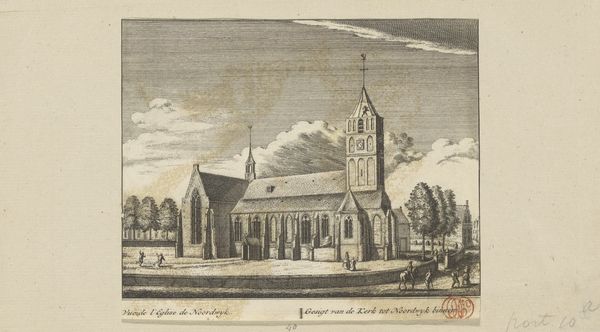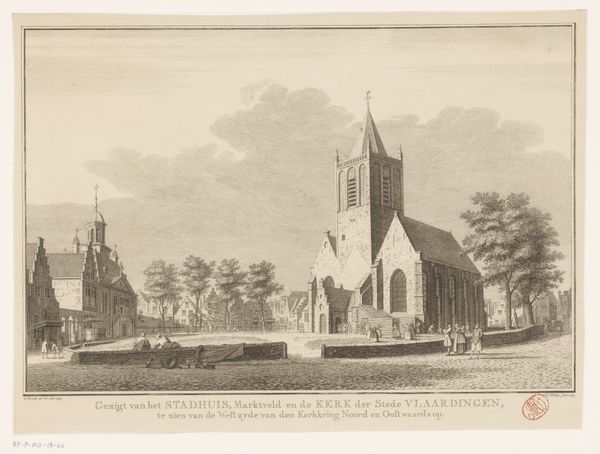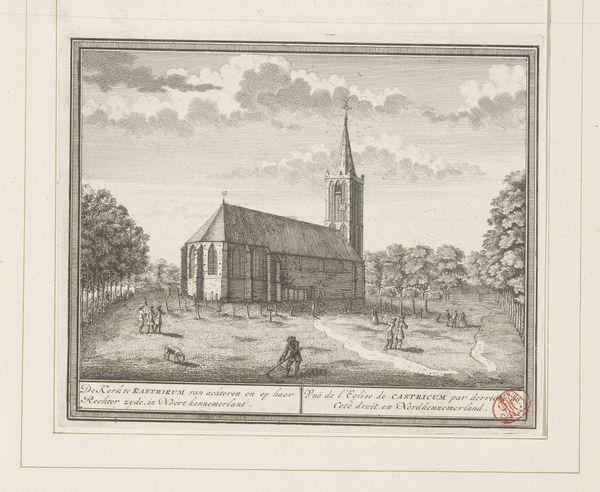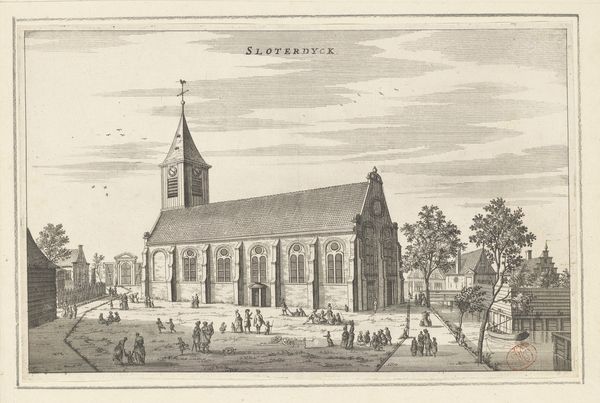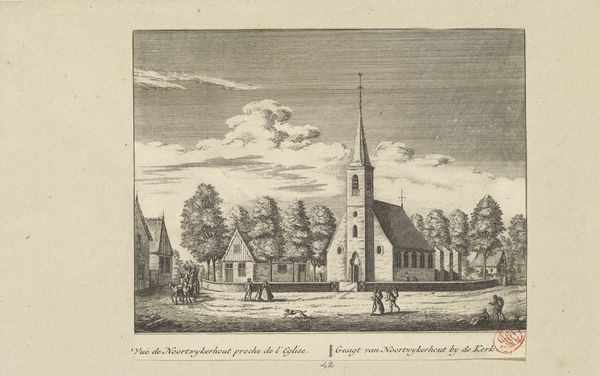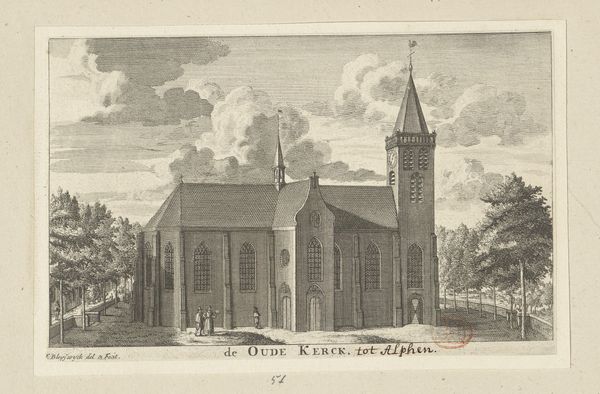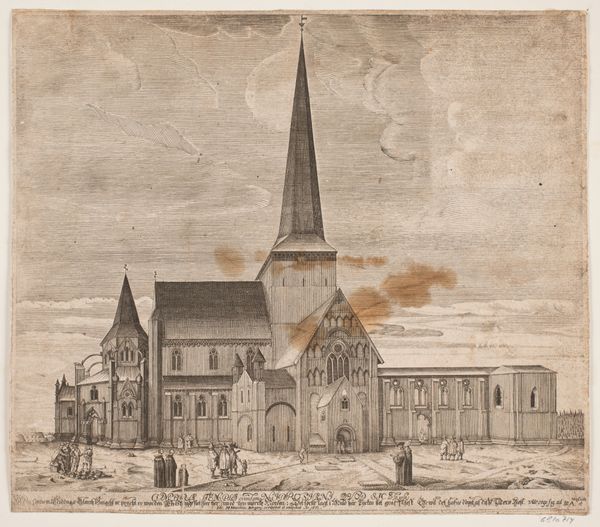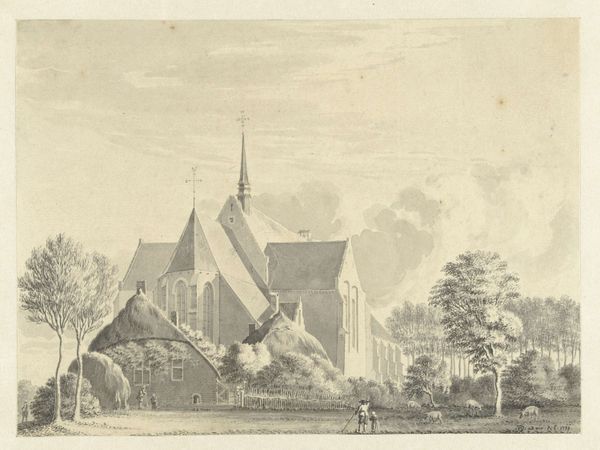
print, engraving
#
baroque
# print
#
landscape
#
cityscape
#
engraving
Dimensions: height 159 mm, width 189 mm
Copyright: Rijks Museum: Open Domain
This print of the church in Oegstgeest was made by Abraham Rademaker sometime between 1675 and 1735, using the technique of etching. Rademaker scratched a design into a wax-coated metal plate, likely copper, and then bathed it in acid. The acid bit into the exposed lines, creating an image that could then be inked and printed. This method allowed for detailed linear work, which is evident in the precise rendering of the architecture and landscape. But, the choice of etching also speaks to a broader shift in artistic production at the time. Unlike painting, which was unique and often commissioned by the wealthy, prints could be reproduced and distributed widely. This made art more accessible, connecting it to the rising merchant class and the expansion of trade networks. Rademaker was not just an artist but also a publisher, and his prints reflect the growing demand for images that captured the world around them. The labor involved was not only artistic, but also entrepreneurial, linking the skills of the craftsman to the market. This print, therefore, embodies the intersection of art, commerce, and the changing social landscape of the Dutch Golden Age.
Comments
No comments
Be the first to comment and join the conversation on the ultimate creative platform.
